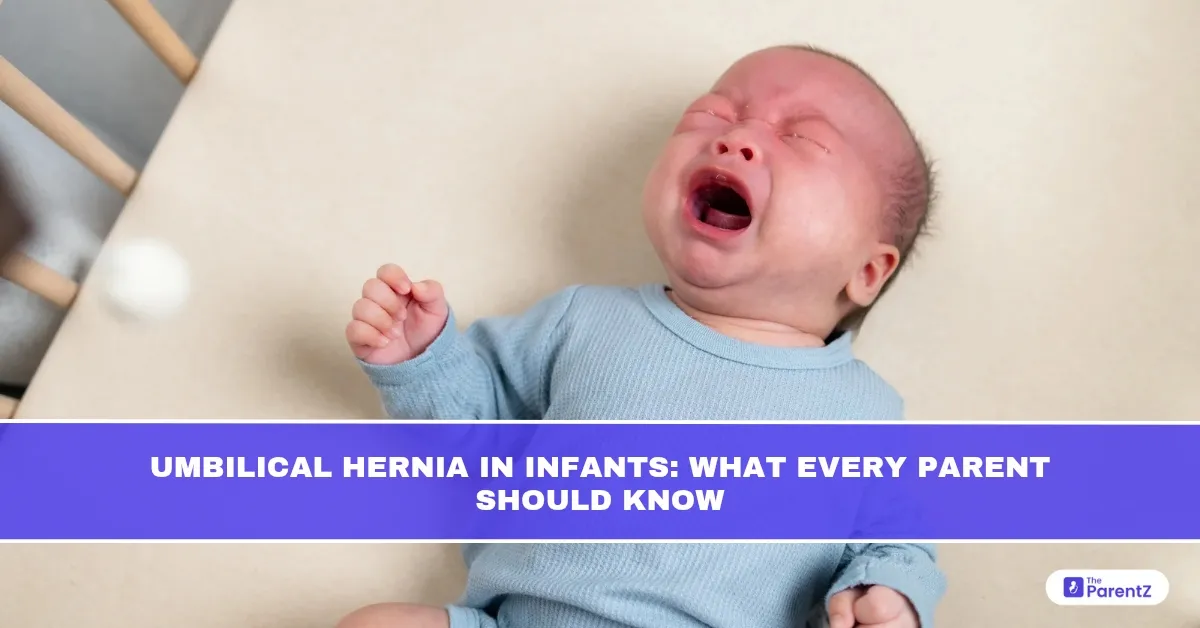Welcoming a newborn into the world brings joy, curiosity, and sometimes, unexpected concerns. One such concern for many parents is noticing a soft bulge around their baby’s belly button. This is often an umbilical hernia, a common and generally harmless condition seen in infants, especially in the first few months of life.
Though it may look unusual, an umbilical hernia rarely causes pain and typically resolves on its own. Still, knowing the signs, understanding what’s happening inside your baby’s body, and recognising when medical advice is needed are important for your peace of mind.
What Is an Umbilical Hernia?
An umbilical hernia occurs when part of the intestine or abdominal tissue bulges through a small opening in the muscles of the abdominal wall near the navel (umbilicus).
Why it happens:
- During fetal development, the abdominal organs form inside the belly.
- The umbilical cord passes through a small opening in the abdominal muscles.
- After birth, this opening usually closes naturally.
- If it doesn’t close completely, a small gap remains, allowing tissue to protrude, especially during crying or straining.
This bulge is what we see as an umbilical hernia.
How Common Is It?
Umbilical hernias occur in about:
- 10–20% of all newborns
- More frequently in premature or low birth weight infants
- Often seen in African, Asian, and Indian populations
Both boys and girls can be affected equally.
How Does It Look?
Parents often notice:
- A soft bulge or swelling at the belly button
- More noticeable when the baby cries, strains, or coughs
- Disappears or flattens when the baby is calm or lying down
- The area is usually not painful or red
- The size of the hernia may vary from a pea to a large marble (1–5 cm)
Is It Dangerous?
Most umbilical hernias in infants are harmless. They are often painless and don’t interfere with the baby’s feeding, digestion, or activities.
However, in rare cases, complications can occur if:
- The hernia becomes incarcerated (the tissue gets trapped and can’t go back in)
- It leads to strangulation, where blood supply is cut off this is a medical emergency
When Should You See a Doctor?
Routine pediatric checkups are usually sufficient, but consult a doctor immediately if you notice:
- Redness, warmth, or tenderness at the hernia site
- The bulge becomes firm and painful
- Vomiting or refusal to feed
- The hernia cannot be pushed back in
- The baby seems irritable or in distress
These signs may indicate incarceration and require prompt medical attention.
How Is It Diagnosed?
A simple physical examination by a pediatrician is enough in most cases.
If there’s concern about the contents of the hernia or complications, an ultrasound of the abdomen may be done to:
- Confirm the diagnosis
- Rule out other abdominal wall defects
- Check for blood flow and bowel involvement in complicated cases
Will It Heal on Its Own?
Yes, most umbilical hernias resolve spontaneously by the age of 1 to 2 years as the abdominal muscles strengthen and the opening closes.
Natural closure is expected in:
- 90% of cases by age 2
- Some may take until 3 to 5 years
When Is Surgery Needed?
Surgical repair may be considered if:
- The hernia persists beyond age 4–5
- The defect is larger than 1.5–2 cm and shows no signs of closing
- There are signs of complications (like incarceration or strangulation)
- There are cosmetic concerns or parental preference
The surgical procedure:
- A simple, day-care surgery under general anesthesia
- A small incision made at the base of the umbilicus
- The protruding tissue is returned to the abdomen
- The muscle opening is closed with sutures
Recovery is quick, and complications are rare. Most children go home the same day.
What About Home Remedies or Taping?
In many communities, families may try:
- Taping a coin over the belly button
- Tying cloth bands or using home compresses
This is not recommended. It:
- Does not help close the hernia
- May cause skin irritation or infection
- Could delay proper evaluation if complications arise
Gentle reassurance, observation, and medical follow-ups are the safest and most effective approach.
Parental Reassurance: You’re Doing Everything Right
As a parent, it’s only natural to worry when you see something unusual in your baby’s body. But with umbilical hernias, the outlook is very reassuring.
Most resolve without surgery
They are not painful in the majority of cases
Regular pediatric visits are sufficient
Surgery is safe and effective if needed later
You don’t need to constantly check or press the hernia; just observe changes, ensure the baby is feeding and growing well, and discuss it at your regular pediatric appointments.
Final Words: Let Nature and Time Heal
Umbilical hernias in infants are a gentle reminder that the body is still growing and closing all its little doors. In most cases, time and a little patience are all that’s needed.
Your baby’s belly button will likely settle into a normal shape as the muscles strengthen and the hernia closes. Until then, your awareness and love are the best support your child needs.








Be the first one to comment on this story.